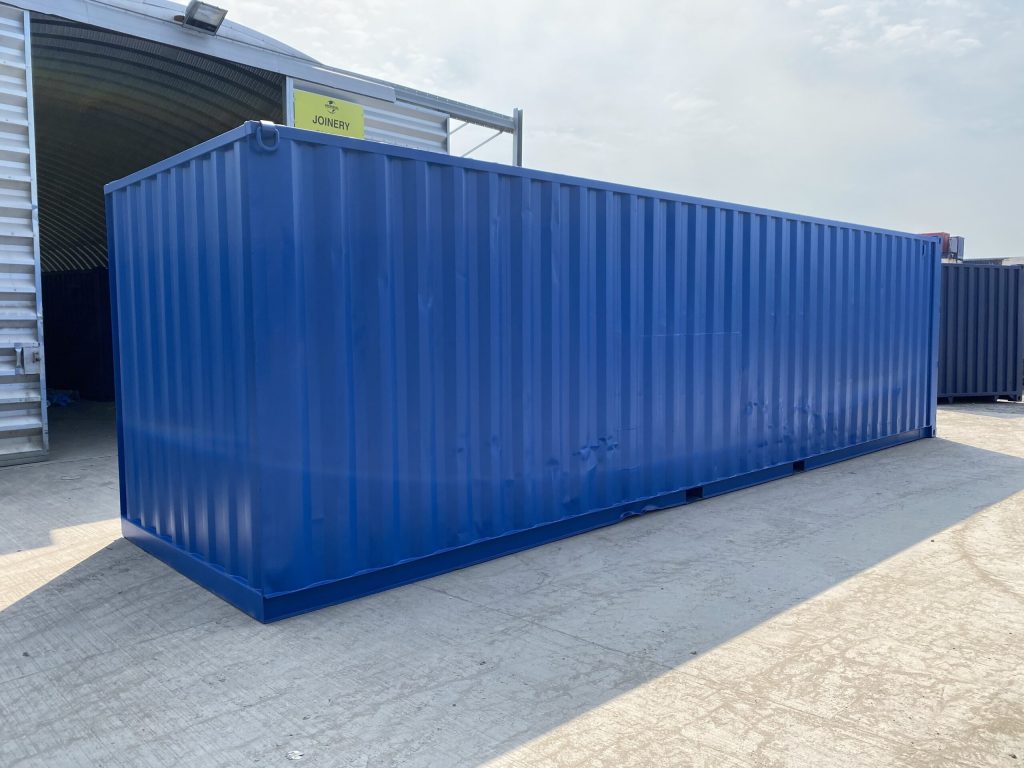Ten Pinterest Accounts To Follow About 30 Foot Container New
Exploring the Versatility of 30-Foot Shipping Containers
Shipping containers have actually changed global trade, logistics, and storage options. Amongst the numerous sizes offered, the 30-foot container stands apart for its distinct benefits and flexible applications. In this blog post, we'll look into the specs, advantages, and usages of 30-foot containers, along with address often asked concerns.
Table of Contents
- Specs of the 30-Foot Container
- Benefits of Using a 30-Foot Container
- Common Applications of 30-Foot Containers
- Cost Considerations
- Regularly Asked Questions
- Conclusion
1. Requirements of the 30-Foot Container
Before diving into the advantages and applications, it's crucial to understand the specs of a 30-foot shipping container. Below is a basic table highlighting the essential dimensions and features:
Description
Measurement
External Length
30 feet (9.144 meters)
External Width
8 feet (2.438 meters)
External Height
8.5 feet (2.591 meters)
Internal Length
28.5 feet (8.688 meters)
Internal Width
7.7 feet (2.352 meters)
Internal Height
7.9 feet (2.392 meters)
Volume
Roughly 1,800 cubic feet (51.0 m THREE)
Maximum Payload
Differs by manufacturer (normally around 25,000 to 30,000 lbs)
2. Benefits of Using a 30-Foot Container
The 30-foot shipping container boasts a number of advantages, making it an appealing choice for different businesses and individuals. Here are some of the standout benefits:
2.1 Space Efficiency
With an internal length of 28.5 feet and a considerable volume, the 30-foot container provides a significant quantity of storage without consuming as much area as longer containers.
2.2 Portability and Transport
The 30-foot container is easier to transport than bulkier sizes such as 40-foot containers. This makes it ideal for localized shipping operations or relocating to smaller building sites.
2.3 Versatile Applications
From domestic uses to company solutions, the versatility of a 30-foot container allows it to be used in many roles, from storage units to mobile workplaces.
2.4 Cost-Effectiveness
Typically, the price inconsistency between 30-foot and larger containers is minimal relative to additional storage area gained. This makes 30-foot containers a cost-efficient choice for numerous applications.
3. Typical Applications of 30-Foot Containers
While these containers are mostly created for shipping and storage, they find usage in various sectors. Here are a few of the most typical application locations:
Application Area
Description
Short-lived Storage
Ideal for companies requiring short-term storage options.
Mobile Offices
Appropriate for on-site job management and operations.
Modified Living Spaces
Can be transformed into relaxing homes or holiday rentals.
Retail and Pop-up Shops
Perfect for short-term retail locations or markets.
Catastrophe Relief
Utilized for providing instant shelter and supplies.
Workshops and Studios
Great for artists or tradespeople desiring personal spaces.
4. Cost Considerations
When considering a 30-foot shipping container, numerous aspects contribute to the total cost:
Cost Factor
Description
Purchase Price
Varies by condition (new vs. used) and market need.
Shipment Fees
Depend upon place and transport distance.
Modifications
The cost differs if you decide to customize for specialized uses (insulation, windows, etc).
Ongoing Maintenance
Routine maintenance is important to extend its life expectancy.
5. Often Asked Questions
Q1: Can I purchase a new 30-foot container?A1: Yes, new 30-foot containers are offered through shipping container suppliers. cogcontainersltd.com use much better durability than utilized containers. Q2: Are 30-foot containers insulated?A2:
Most standard 30-foot containers are not insulated. However, you can modify them for insulation depending upon your requirements. Q3: How are 30-foot containers transported?A3: Containers are usually carried via flatbed trucksor through shipping lines that accommodate container transportation. Q4: Can a 30-foot container be used for long-lasting storage?A4: Yes, these containers are frequently utilized for long-lasting storage options in numerous industries
**due to their toughness. Q5: What is the weight limit for a 30-foot container?A5: The maximum payload normally varies from 25,000 to 30,000 lbs, depending on the particular container design and manufacturer. 6.
Conclusion The 30-foot shipping container provides an ideal blend of flexibility and area, making it an important asset for numerous applications— from momentary storage options to distinct living spaces.
 ******
******